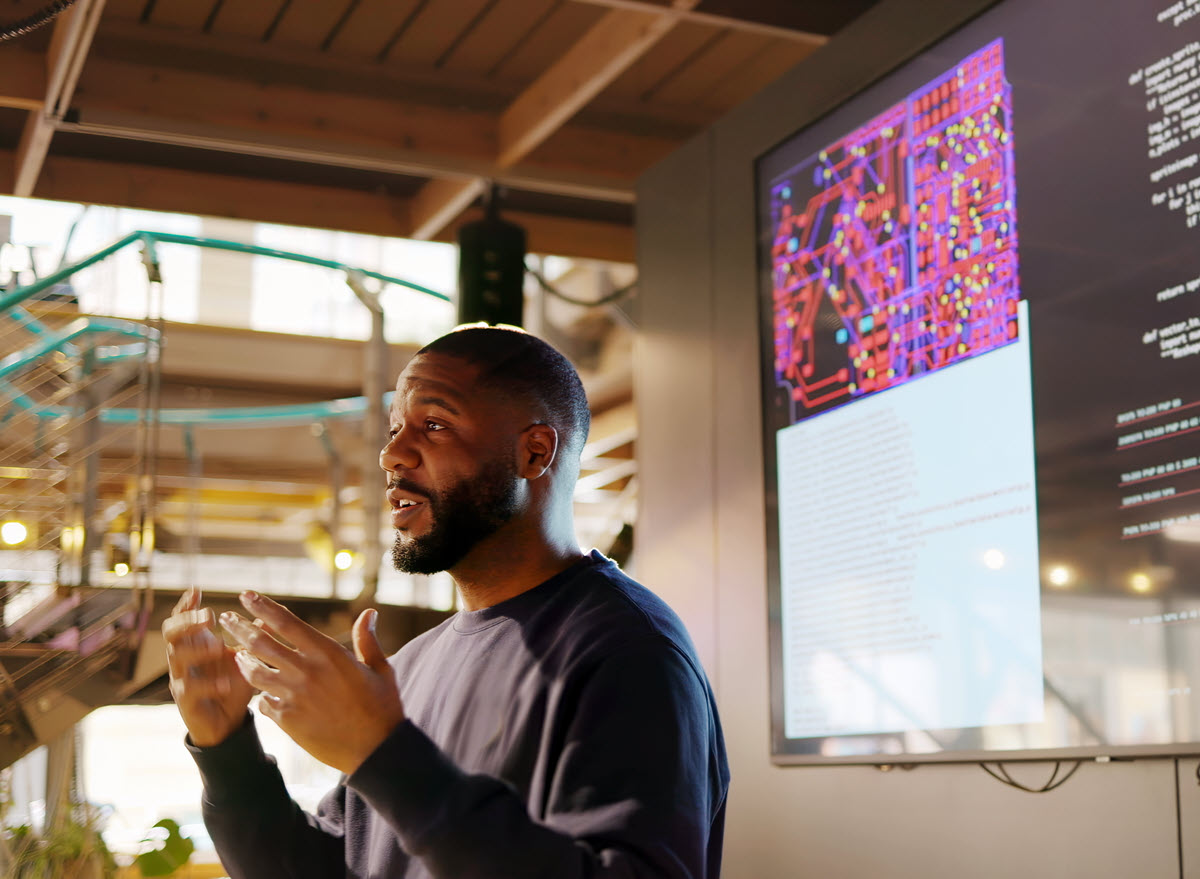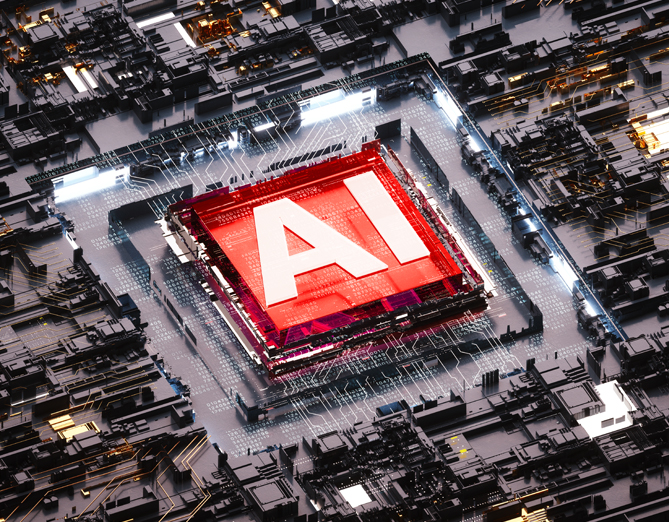AI has captured everyone’s imagination, including those in the networking industry. Tim Pearson and Kailem Anderson discuss some of Ciena’s innovative AIOps use cases, and how AI, including machine learning and GenAI, significantly enhance network and service operations for our customers.
Interest in Artificial Intelligence (AI) has exploded over the past few years and is already transforming the way people search and communicate information. The application of AI techniques to enhance and automate network and service operations is now commonly known as AIOps. Ciena has been at the forefront of AIOps innovation for years, integrating powerful analytics and sophisticated algorithms into our Navigator Network Control Suite (Navigator NCS) and Blue Planet Intelligent Automation software portfolios. As shown in the diagram below, Blue Planet and Navigator NCS are complementary yet independent software portfolios, which work together to enable customers’ AIOps strategies.
Figure 1: Ciena’s complementary software offerings enabling AIOps
We recently sat down with experts Tim Pearson, Vice President of Product Line Management for Ciena’s Navigator NCS, and Kailem Anderson, Vice President of Global Products and Delivery, for Blue Planet a division of Ciena, to discuss the innovative AIOps applications Ciena supports today and share how recent developments in AI are opening new opportunities.

Service Providers believe AI has the potential to dramatically improve lifecycle operations
Q: In a recent survey of IT and telecom personnel worldwide, almost 60% of respondents believe that the use of AI will improve network operational efficiency by 40% or more. Does that statistic surprise you?
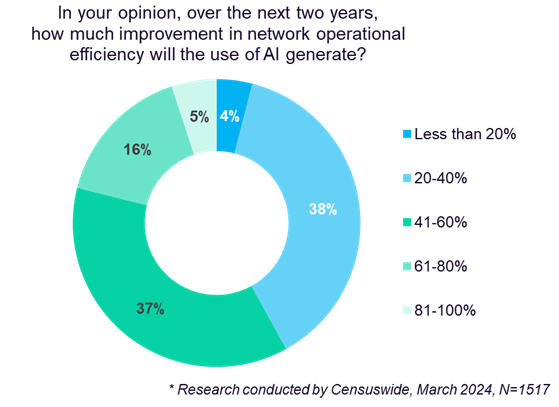 Figure 2: Majority of respondents believe that AI will improve network operational efficiency by 40% or more
Figure 2: Majority of respondents believe that AI will improve network operational efficiency by 40% or more
Tim: Not at all. We’ve seen tremendous uptake in AI applications in our day-to-day lives and the networking industry is no different. There’s great upside for network operations by applying AI to a variety of use cases, including automation of optimization, troubleshooting, and monitoring.
Kailem: I’m also not surprised by these results. We’ve seen growing levels of adoption for analytics, AI, and machine learning (ML) across our customer base over the past few years. That’s especially true for improving assurance and root-cause analysis efficiency, where we support several prebuilt, out-of-the-box use cases.
Pick your key use cases and technologies to maximize the value of AIOps
Q: What are some of the top AIOps technologies and use cases that can deliver real business value?
Tim: ML can definitely help in service assurance, especially in multi-layer networks. Operators are already leveraging historical and real-time network telemetry from equipment to optimize routes, channels, bandwidth, or spectrum to meet service level agreements (SLAs). And now advanced AI techniques can deliver even more precise, actionable insight for making intelligent optimization decisions.
For example, Ciena’s Fiber Health Assurance app uses ML to identify probable causes of deviations in fiber measurements, so operators can proactively rectify the issues. This includes, tuning the optical path, which could stop overlay IP links from being frequently rerouted. Or, if signal-to-noise-ratio (SNR) measurements were strong, one could adjust optical parameters to enable higher IP link capacity. This helps providers extract more capacity from their network assets, reducing CapEx.
 Figure 3: Fiber Health Assurance in action
Figure 3: Fiber Health Assurance in action
Kailem: ML is also useful for proactively detecting and mitigating failures. Blue Planet’s Silent Fault Detection (SFD) helps operators pinpoint the cause of service issues in ‘operations blind spots’ like in passive optical network (PON) environments, where the equipment doesn’t generate alarms, but performance degradations commonly occur from loose connectors, bent optical patch cords, etc.
SFD works by analyzing the interception of good and bad service paths, leveraging our ML algorithm to determine the outages' most likely root cause. It also correlates and suppresses multiple symptomatic events, reducing them to a single, actionable ‘smart alarm’ to help operators localize the issue more quickly across their complex, multi-domain, and multi-vendor networks. Based on trials with customers, we’ve seen very positive results, with quantifiable reductions of service-impacting network issues.
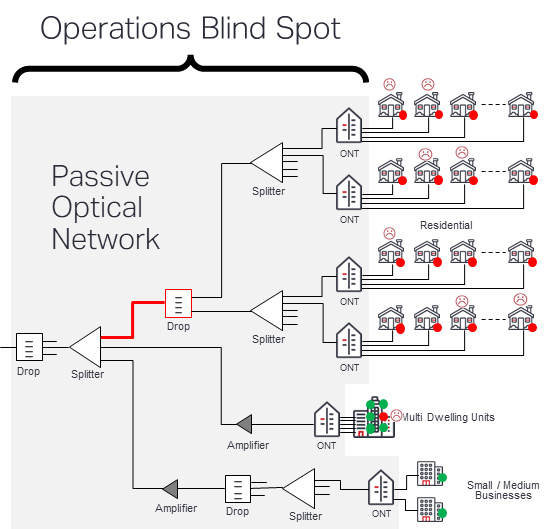 Figure 4: Silent Fault Detection helps detect failures in PON environments
Figure 4: Silent Fault Detection helps detect failures in PON environments
Q: Everyone seems to be jumping on the generative AI (GenAI) bandwagon. Is there a play for GenAI in network and service operations?
Kailem: Yes, there’s strong interest from operators who are looking at GenAI and large language models (LLMs) for optimizing their operations and improving the customer experience. At this point, we’re seeing many of them investigating options such as aligning with a specific hyperscaler LLM, as well as initiatives like the Global Telecom AI Alliance (GTAA) that lays out a vision for telco-specific LLMs.
To simplify these decisions, Blue Planet recently introduced an open framework that gives operators ‘Bring Your Own’ AI model flexibility for optimizing their operations and OSS. The AI Studio provides a hosting and execution environment that helps operators integrate AI models in a way that is not restrictive, so they’re not locked into any specific LLM, as well as to manage AI use cases from Blue Planet like SFD (described above), those developed by operators’ own data science teams, or third parties. This ability to manage different AI models speeds up the shift to AI-driven operations and provides a level of future-proofing as new models are developed.
Tim: It’s important for each service or cloud provider to judiciously pick the key use case that will benefit most from the new technology, to attain the best outcome for their organization. In conversations with our customers, they are keen to apply GenAI to help accelerate and automate operational workflows, often with the final decisions taken by operations staff (human-in-the-loop automation). This involves using GenAI and Natural Language Processing (NLP) to integrate domain-specific data, in context, as part of a specific workflow, to provide precise responses.
A GenAI engine can even build on that, to interact directly with the network via API calls. That’s an entirely new way to automate operations, over and above traditional DevOps methods. We’re now working on GenAI-based tools to significantly accelerate the writing of automation applications.
Interestingly, more automation is also driving the need for more advanced visualization in our user interfaces so that operations teams can track the progress of multi-step automation flows and ensure they meet the business intent.
Q: What are the key benefits for this GenAI use case?
Tim: It’s primarily about reducing OpEx. By using GenAI tools to accelerate troubleshooting, provisioning, and planning workflows, operations personnel can get their jobs done faster. As a consequence the entire business becomes more agile. Customers really value that.
Furthermore, teams are then offloaded from time-consuming repetitive tasks and can then allocate time and effort to the creation and introduction of new services for their customer base. Another customer win!
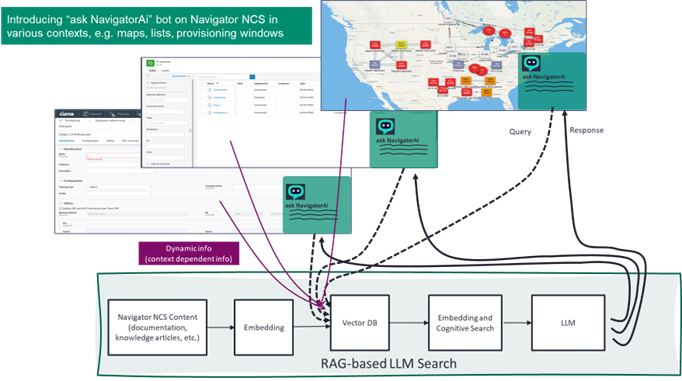 Figure 5: How GenAI is leveraged for conversational help in network operations
Figure 5: How GenAI is leveraged for conversational help in network operations
Q: As service and cloud providers consider deploying an AIOps strategy, where should they begin?
Kailem: The essential starting point is to identify the operational use case and leverage the appropriate AI technology to drive the desired business outcome. Although GenAI is garnering the most mindshare lately, it may not provide the best solution for the identified use case. The good news is that AIOps has already been proven across Blue Planet’s automation portfolio for several years, with multiple pre-built use cases available today. So, providers can take advantage of these offerings and then can expand from there.
Tim: We’re hearing that multi-layer, multi-vendor use cases can significantly benefit from leveraging AI to correlate and analyze large amounts of network data, for proactive failure detection, service assurance, and performance optimization. It is currently very manually-intensive and time-consuming to do such analysis across layers. But AI can infer the best solution very quickly – once the AI models are trained and validated. Overall this means that service and cloud providers gain better insights more rapidly in order to evolve their networks to meet fast-changing market demands.
Q: Thanks to both of you for sharing your insights as to where the market is heading in incorporating AI technologies within network and service operations. It certainly is an exciting time!
If you are interested in following along on our thoughts around AI and how it will impact the network visit our AI Insights page to stay up to date.





